Anthony Albanese protests China’s fighter plane intercept
Australia’s air force will keep flying over the South China Sea despite a dangerous interception by a Chinese J-16 fighter that placed the crew of an RAAF surveillance jet in jeopardy.
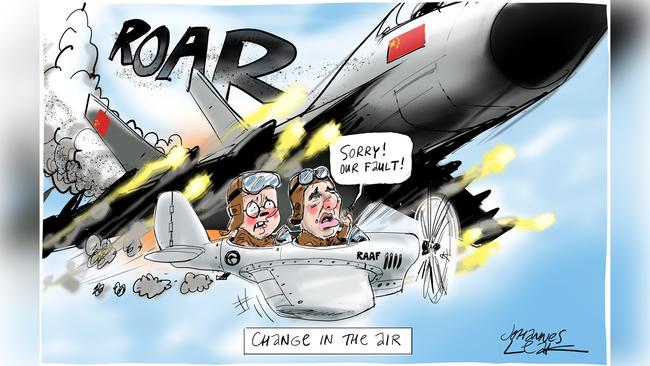
Australia’s air force will keep flying over the South China Sea despite a dangerous interception by a Chinese J-16 fighter that placed the crew of an RAAF surveillance jet in jeopardy in one of the most serious peacetime incidents of its type involving an Australian aircraft.
Chief of the Defence Force Angus Campbell and Defence secretary Greg Moriarty lodged furious protests with their People’s Liberation Army counterparts after the Chinese aircraft buzzed the Royal Australian Air Force P-8A Poseidon, launching flares and “chaff” countermeasures.
Anthony Albanese said the “dangerous manoeuvre” threatened the P-8 aircraft and the lives of its crew, and his government had formally expressed its “concerns” to Beijing.
Former air force chief Leo Davies said the incident, in international airspace over the South China Sea, was “as aggressive as I have heard of”.
It occurred on May 26, as Anzac frigate HMAS Parramatta departed Sydney on a regional deployment, including a transit of the South China Sea, and the day after the Prime Minister met with US President Joe Biden and fellow Quad leaders in Tokyo.
Defence Minister Richard Marles said the Australian aircraft and its crew were put at risk during the incident, in which pieces of aluminium chaff were drawn into the P-8’s engines.
The P-8, which typically operates with a nine-person mission crew, made it back to base unharmed.
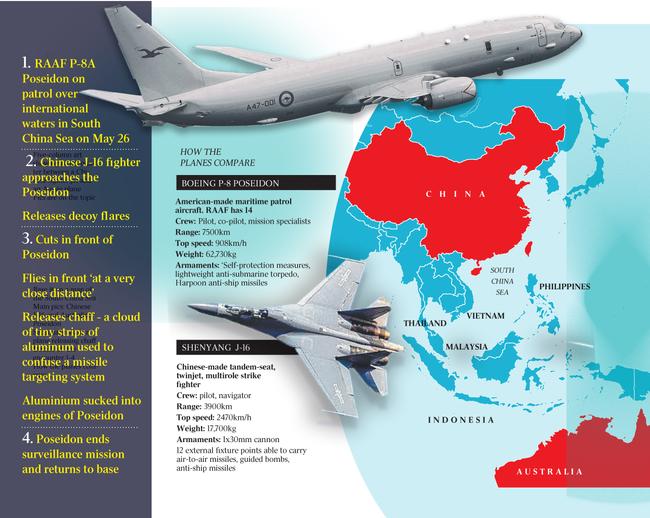
Mr Marles said the J-16 flew “very close to the side of the P-8”, releasing decoy flares alongside the Australian aircraft.
“The J-16 then accelerated and cut across the nose of the P-8, settling in front of the P-8 at a very close distance,” he said.
“At that moment it then released a bundle of chaff, which contains small pieces of aluminium, some of which were ingested into the engines of the P-8 aircraft.
“Quite obviously, this is very dangerous.”
Mr Marles said the P-8’s crew “responded professionally, and in a manner which would make us all feel proud”.
The incident occurred about a week before a call by Chinese Foreign Minister Wang Yi last week for “concrete actions” to repair the nations’ bilateral relationship, declaring there was “some political force in Australia (that) insists on viewing China as a rival rather than a partner”.
It follows similar “unprofessional” conduct in recent weeks by Chinese fighter jets towards Royal Canadian Air Force patrol aircraft in the East China Sea. In those incidents, RCAF jets were forced to take evasive action “to avoid a potential collision with the intercepting aircraft”.
Speaking on Sunday ahead of his trip to Indonesia, Mr Albanese said the Chinese aircrew had behaved in an unacceptable manner.
“In the Australian government’s view, in the Defence Department’s view, this was not safe, what occurred, and we’ve made appropriate representations to the Chinese government expressing our concern at this,” he said.
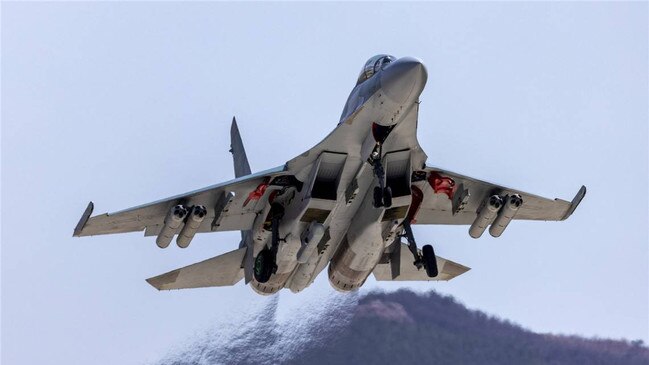
Peter Dutton said the “act of aggression” by the Chinese aircraft was a serious one, and the Coalition would “support the government in whatever actions they need to take to keep our country safe”.
“China says one thing but you have to look at their actions, and their actions here are dangerous,” the Opposition Leader said.
Mr Marles said the P-8 was undertaking normal maritime surveillance activities in the area, which Australia and other countries had done for decades.
“We were operating completely within our rights in international law,” he said. “Because the South China Sea matters to Australia. It matters to Australia because most of our trade traverses the South China Sea.
“And so, to that end I want to make it also very clear that this incide
nt will not deter Australia from continuing to engage in these activities.”
Air Marshal Davies, who retired as air force chief in 2019, said it was common for aircraft to be “observed, monitored and shadowed” by rival nations’ aircraft, but he said such “aggressive manoeuvres” were rare.
“It is quite unusual for an individual aircraft to be demonstrating that sort of aggression, particularly where – if I am reading where the P-8 was accurately – it is a well-known flight path and flight area for surveillance operations,” he said.
Air Marshal Davies said chaff “packages” were relatively small and contained lightweight aluminium that was designed to throw off enemy missiles’ radar systems. He said the aircraft’s engines were designed to cope with ingesting birds so the chaff was unlikely to have caused significant problems.
Euan Graham, a senior Asia Pacific security fellow at the International Institute for Strategic Studies in Singapore, said the conduct of the Chinese jet had introduced a “next-level layer of stupidity and riskiness” into the tensions between the countries.
Dr Graham said the incident, and those involving the Canadian aircraft, suggested a co-ordinated policy rather than the “stupidity of an air crew of a local commander”.
“In Australia’s case, I think the new government is being tested. We have seen it in the Pacific, and I think this is part of the same picture, in my view,” he said. “What China wants to do is to put some doubt between the US and its major allies. “Placing pressure on Australian operations in the South China Sea … raises the risk, and makes it more uncomfortable to do unsupported operations in the region, because the level of harassment has been clearly stepped up.”
The incident followed the targeting of an Australian P-8 by a Chinese warship with a high-powered laser in the Arafura Sea in February, in a move that was described by former prime minister Scott Morrison as “a reckless and irresponsible act”.
Tensions were escalated further during the Australian election campaign when a Chinese spy ship was detected off Australia’s west coast.
The ship, the Haiwangxing, was sailed within 70 nautical miles away from the Harold E. Holt Communication Station, north of Exmouth, on May 8. It was the furthest south that a Chinese intelligence ship has sailed off Australia’s coast. It was later tracked off the port of Broome.
Speaking in Papua New Guinea last week, China’s Foreign Minister, Mr Wang, said the solution to Australia-China tensions was to “uphold mutual respect, seek common ground while shelving differences, and create the necessary conditions for bringing bilateral relations back on the normal track”.




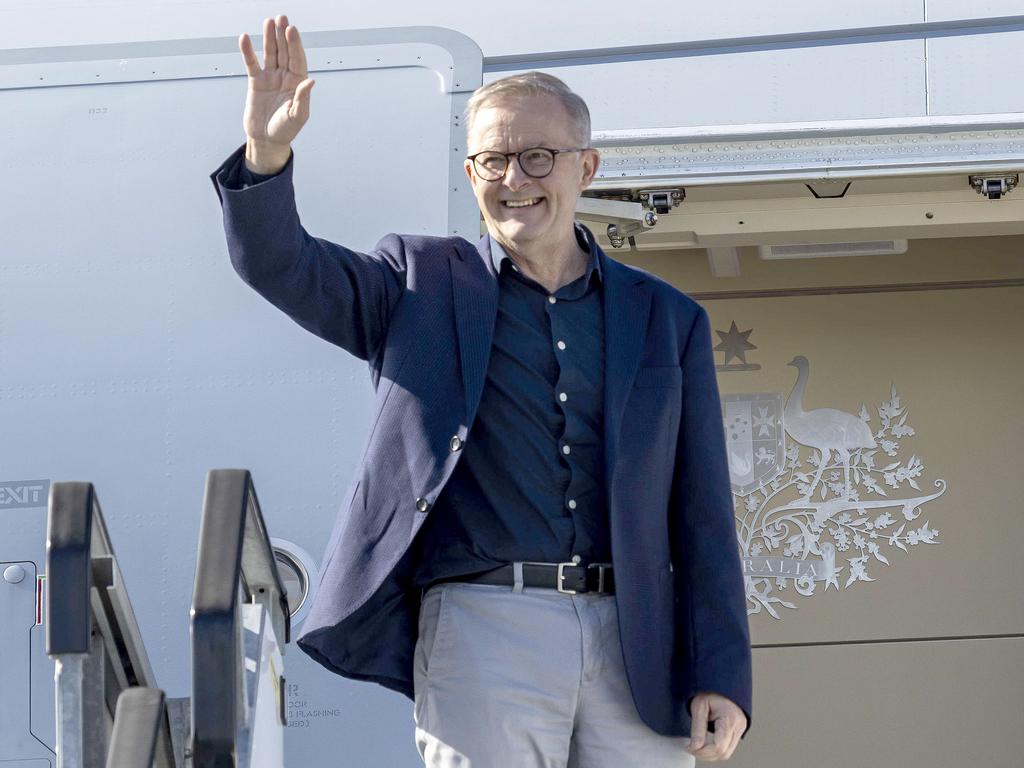
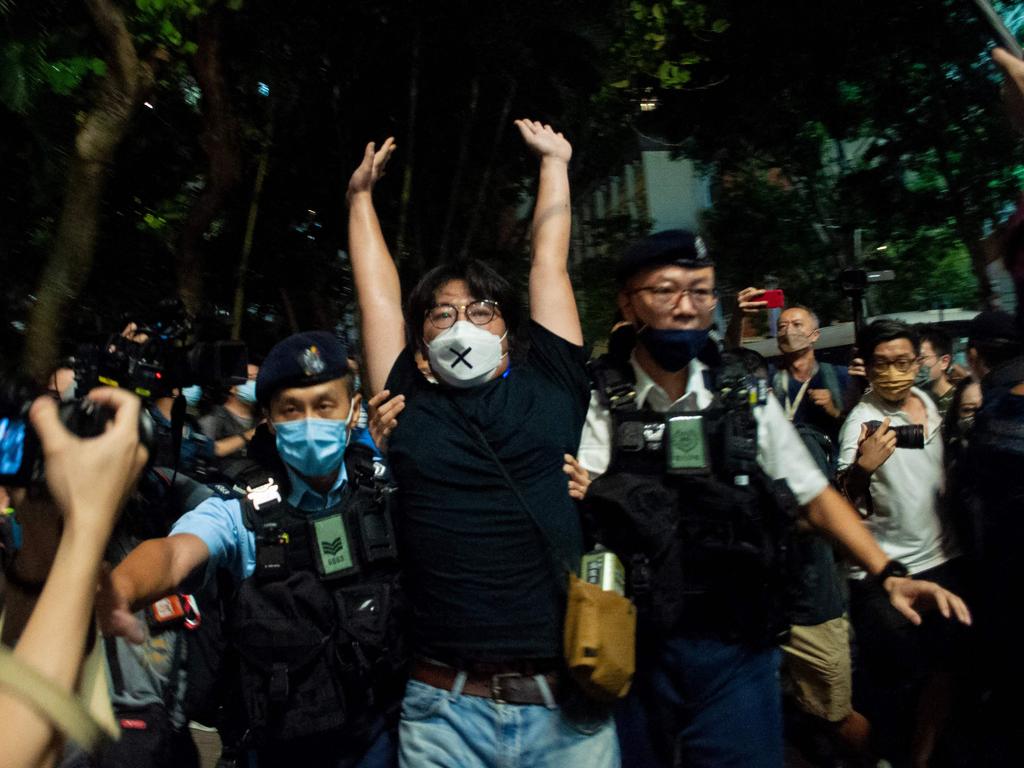


To join the conversation, please log in. Don't have an account? Register
Join the conversation, you are commenting as Logout